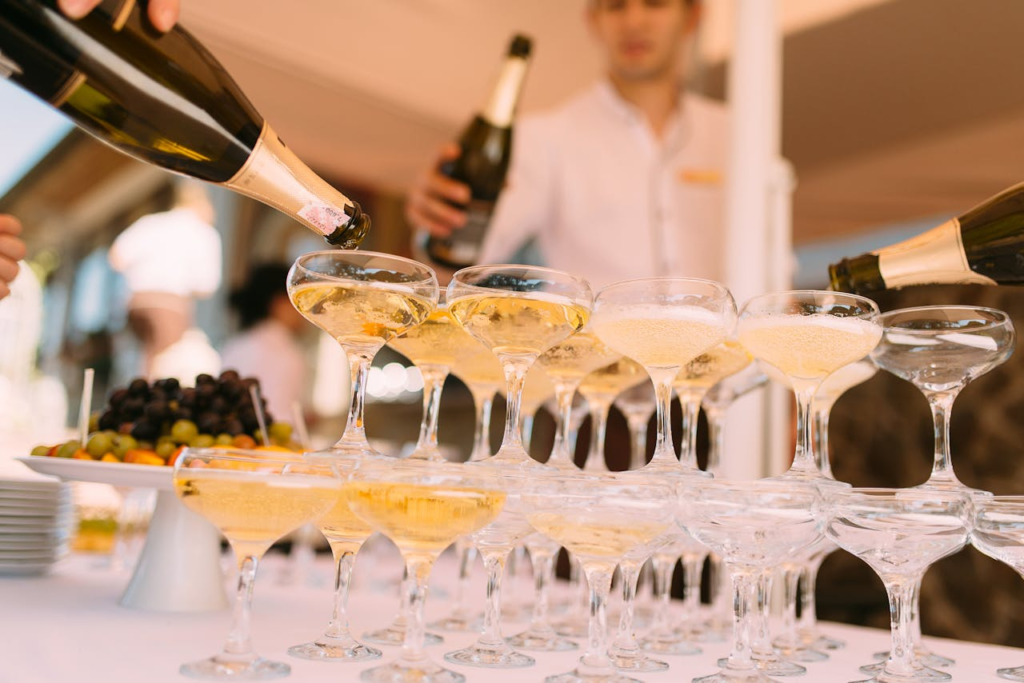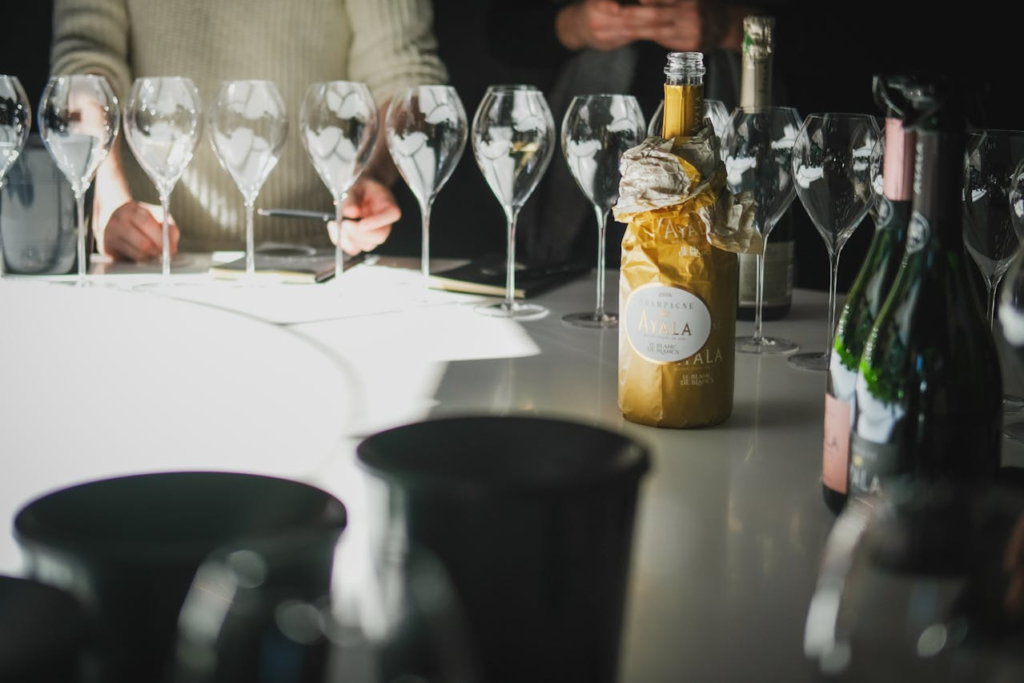Discover the key differences between Champagne, Prosecco, and sparkling wine. Learn flavours, methods, pairings & tips to choose the perfect bubbly for any occasion.
Why Sparkling Wine Matters
Sparkling wine isn’t just a drink—it’s a mood, a celebration, a lift in the atmosphere. From birthday toasts to weekend brunches, Champagne, Prosecco, and sparkling wine have become the go-to choice for raising a glass. Yet most people find themselves confused: What’s really the difference between Prosecco and Champagne? Are all sparkling wines the same?
As a wine enthusiast, I’ve sipped flutes in the vineyards of Veneto, strolled through Champagne’s cool underground cellars, and sampled crisp Australian sparkling wines overlooking the Yarra Valley. Each sip tells a story of craftsmanship, climate, and culture. In this guide, we’ll explore origins, flavours, and occasions for each bubbly—so you’ll know exactly what to pour the next time you celebrate.
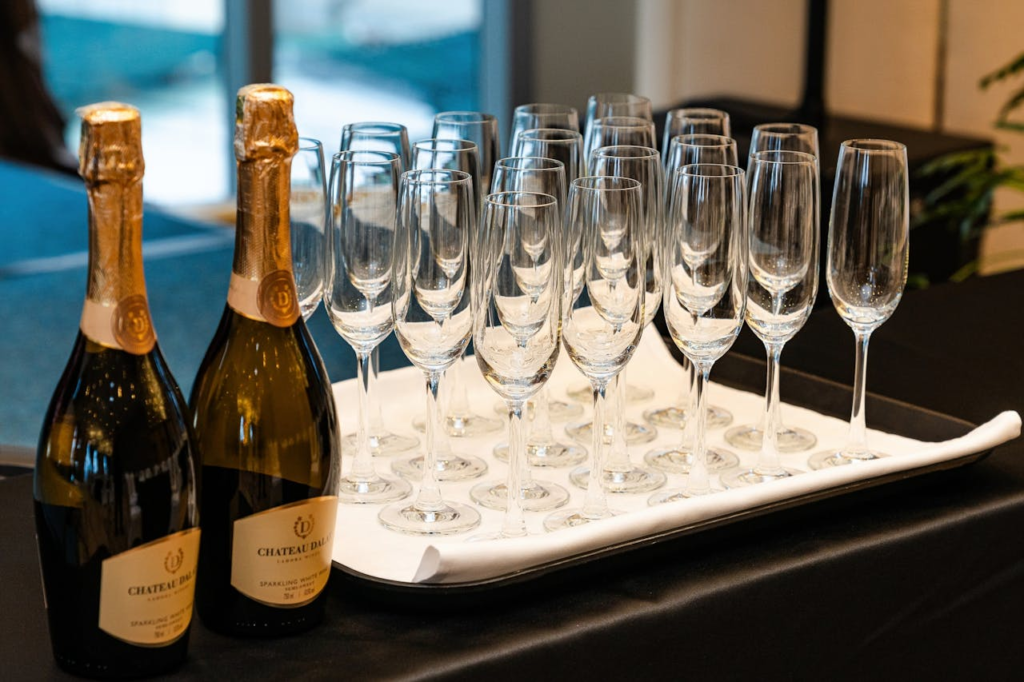
What Makes Sparkling Wine Sparkle?
At its core, sparkling wine is regular wine with one magical difference: bubbles. Those tiny streams of fizz are the result of a second fermentation, where yeast consumes sugar, creating alcohol and carbon dioxide. Depending on where and how it’s made, the final wine can be simple and fruity or layered with rich, toasty complexity.
Traditional Method (Méthode Champenoise): Fermentation occurs inside each bottle. This takes time and skill, producing finer bubbles and complex flavours. Used in Champagne, Cava, and Crémant.
Charmat (Tank) Method: Second fermentation happens in large stainless-steel tanks. This is quicker, cheaper, and preserves fresh fruit flavours—used in Prosecco.
Both create effervescence, but the production method makes a world of difference in taste, price, and occasion.
Prosecco: Italy’s Everyday Sparkle
Prosecco is Italy’s answer to casual celebration—a light, approachable wine that’s equal parts festive and affordable.
Origins & Grapes
Prosecco comes from Veneto and Friuli Venezia Giulia, with the Glera grape as its star. Towns like Valdobbiadene and Conegliano are famous for their steep, sun-drenched hills that produce some of the finest bottles.
Method & Price
Unlike Champagne, Prosecco uses the Charmat method, fermented in large stainless-steel tanks. This makes it cheaper to produce and naturally more budget-friendly in shops.
Flavour Profile
Notes of green apple, peach, pear, and honeysuckle
Fresh, fruity, and lightly floral
Usually sweeter than Champagne
Perfect Pairings
Prosecco’s crispness makes it perfect before a meal or with light dishes. Try it with:
Prosciutto-wrapped melon (an Italian classic)
Light seafood pasta or fresh shrimp
Fruit-based desserts
When to Choose Prosecco
Weekend brunch (try it in a Bellini or Aperol Spritz)
Relaxed get-togethers or picnics
Large celebrations when you want a cost-friendly crowd pleaser
Champagne: The Gold Standard of Sparkling Wine
Champagne isn’t just a drink—it’s a destination, a symbol of prestige, and a piece of French heritage.
Origins & Grapes
Legally, only wine from the Champagne region in northeastern France can be called Champagne. The main grapes are Chardonnay, Pinot Noir, and Pinot Meunier.
Method & Time
Produced by the traditional method, Champagne undergoes secondary fermentation in the bottle, then ages on the lees (spent yeast) for complexity. This lengthy, labour-intensive process explains why Champagne costs more.
Flavour Profile
Zesty citrus, apple, and pear
Layers of brioche, toast, and hazelnut from lees ageing
A richer, creamier mouthfeel with smaller, persistent bubbles
Perfect Pairings
Champagne is a versatile food wine—it can stand up to both elegance and indulgence. Pair it with:
Fresh oysters or lobster
Crispy fried chicken (acid cuts the fat beautifully)
Hard cheeses like Comté or aged Gouda
When to Choose Champagne
Major milestones (weddings, anniversaries, promotions)
Gifts and luxury moments
Pairing with fine dining
Other Sparkling Wines Worth Discovering
While Champagne and Prosecco steal the spotlight, the sparkling world is far wider—and often more affordable.
Cava (Spain)
From Catalonia, Cava rivals Champagne in technique (bottle fermentation) but often costs less. Expect citrus, almond, and herbal flavours. Top producers like Freixenet and Codorníu offer excellent value.
Crémant (France)
Made in regions like Alsace, Burgundy, and the Loire Valley, Crémant is essentially Champagne-style wine made outside Champagne. Affordable yet refined, it often showcases regional grape varieties like Chenin Blanc or Pinot Gris.
New World Sparklings
Tasmania, Australia: Cool climates produce world-class sparkling wines, often compared to Champagne. Vineyards like House of Arras are worth seeking out.
New Zealand: Known for crisp acidity, especially from Marlborough Sauvignon Blanc blends.
California: Napa and Sonoma producers like Domaine Carneros (founded by French Champagne house Taittinger) are bridging Old and New World styles beautifully.
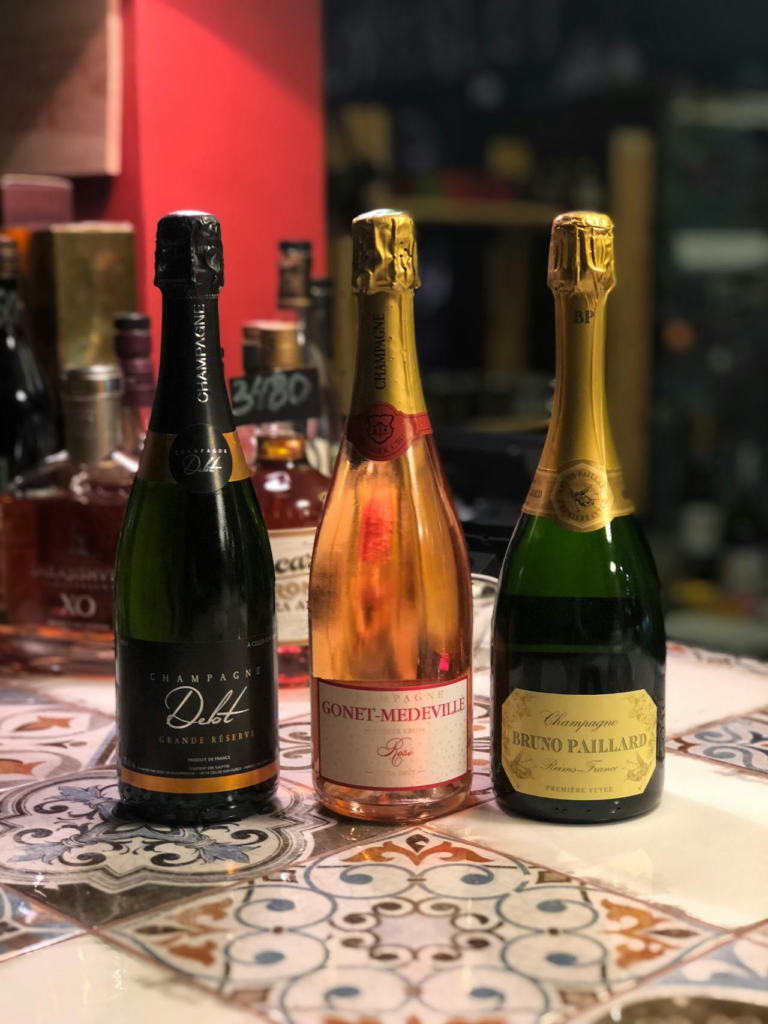
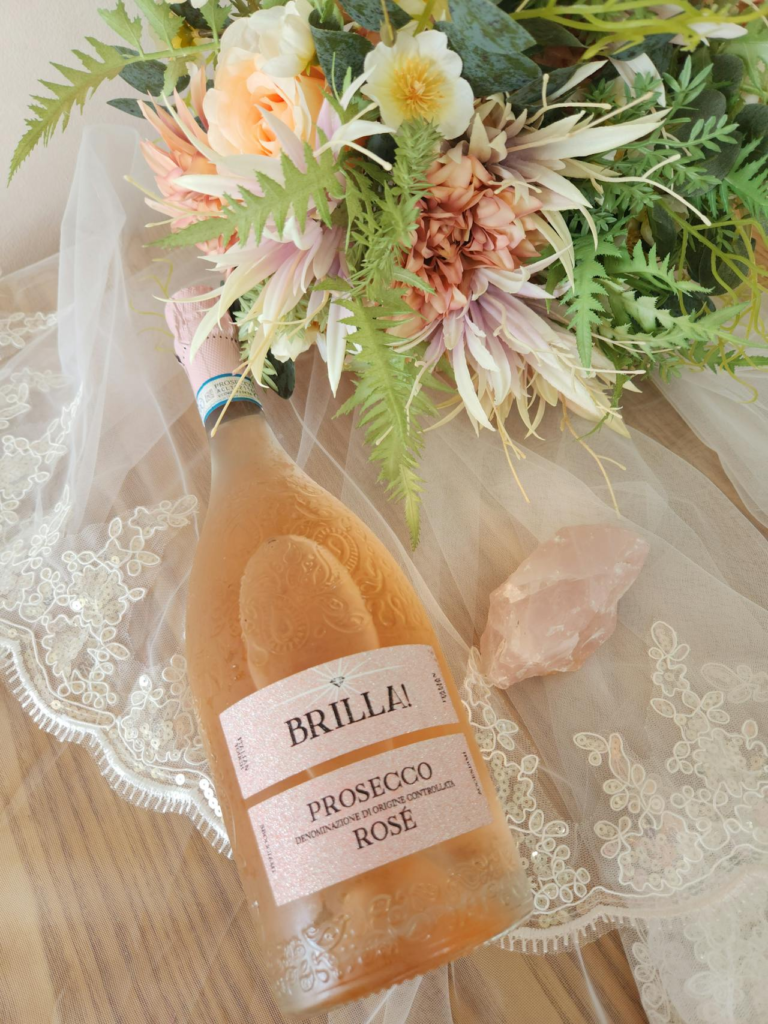
Sweetness Levels Explained
One of the most confusing parts of buying bubbly is understanding the label. Here’s a simple breakdown:
| Label | Sweetness Level | Example Occasion |
|---|---|---|
| Brut Nature | Bone dry | Aperitif, raw seafood |
| Extra Brut | Very dry | With sushi or oysters |
| Brut | Dry | Versatile, most Champagne |
| Extra Dry | Slightly sweet | Classic Prosecco style |
| Dry | Noticeably sweet | Fruit desserts |
| Demi-Sec | Very sweet | After-dinner pairing |
| Doux | Lusciously sweet | Celebration desserts |
How to Serve Sparkling Wine
Even the best bubbly can fall flat if served poorly.
Temperature: Chill bottles to 7–10C (45–50F). Too cold dulls flavour, too warm flattens bubbles.
Glassware: Skip old-school flutes—opt for tulip-shaped glasses for better aroma release.
Pouring: Angle the glass and pour slowly to preserve the mousse (bubbles).
Storage: Champagne can age beautifully for decades, but Prosecco should be enjoyed young and fresh.
The Takeaway: Choosing Your Bubbles
Here’s the quick guide:
Choose Prosecco for casual fun, spritz cocktails, or budget-friendly parties.
Choose Champagne for luxury occasions, gifting, or when flavour complexity matters.
Explore other sparkling wines if you want quality at a lower price point with regional flair.
Wine should never feel intimidating. The “best sparkling wine” is the one that you enjoy, whether it’s a $15 bottle of Prosecco on a sunny picnic or a rare vintage Champagne uncorked for a wedding toast.
So the next time you’re standing in front of a wall of bottles feeling overwhelmed, think back to flavour, budget, and occasion—and you’ll pick the right bubbles with confidence.
Raise a glass, sip slowly, and let those bubbles remind you that life’s best moments are worth celebrating.

